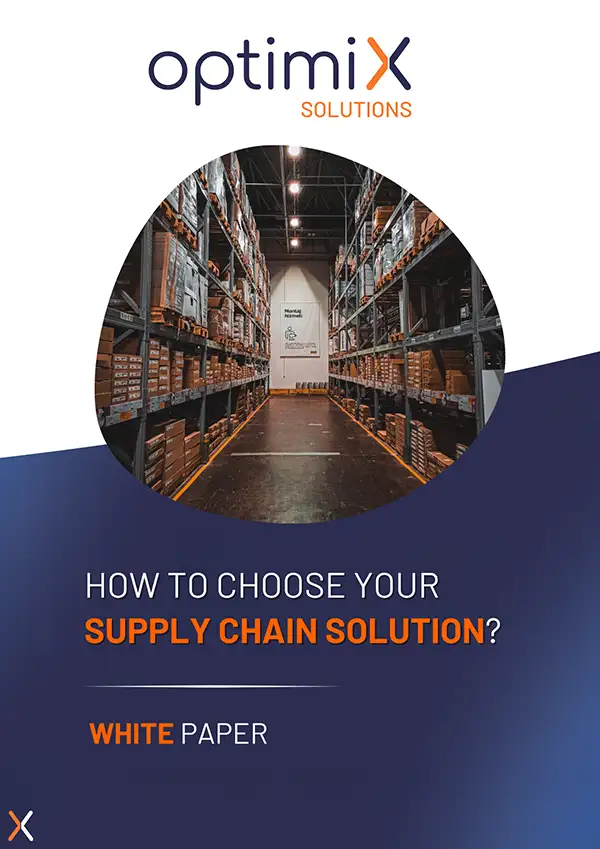It goes without saying that a company’s profitability is the key to its long-term survival. So, as a store manager, it’s vital to be able to manage demand effectively in order to achieve business objectives and maximize profits.
However, supply chain demand forecasting is a complex task requiring well-established skills and techniques. These techniques help companies to anticipate customer needs, optimize the supply chain and reduce inventory costs.
In this article, you’ll find the essential steps to consider when implementing effective sales forecasting strategies.
Demand planning is an ongoing process requiring constant monitoring and regular adjustments. By following the steps outlined in this article, you’ll be able to refine your approach and improve your results over time.
Define your supply chain Demand Forecasting objectives.
The first step in implementing a demand forecasting strategy is to clearly define your objectives.
Objectives vary according to the company’s activity and the products it markets. However, it is essential to understand that objectives go far beyond simple predictions, they encompass a set of parameters such as :
- the supply plan ;
- inventory management ;
- the level of orders ;
- pricing policies ;
- promotional strategies ;
- quality management.
What’s more, these objectives are often linked to strategic issues such as market expansion or improving customer satisfaction.
Understand the main Supply chain demand forecasting processes
To implement an optimal forecasting strategy, it’s vital to understand the processes, data and models involved.
Data analysis involves the manipulation of different types of data, be they historical, current or external. To draw meaningful conclusions from these data, we need to understand their nature and choose the most appropriate methods for processing them.
Commonly used techniques for data analysis include aggregation, which combines data to provide a more comprehensive overview, and selection, which chooses a subset of data for analysis. The latter is particularly useful when the data set is too large to be processed in its entirety.
Finally, the forecasting method uses models to anticipate future events or results, based on past and present data.
Each of these methods offers advantages and limitations, depending on the type of data and the analysis objectives. It is therefore essential to understand the specific features of each technique, so as to choose the one best suited to your data study.
Determine the type of models to use for your analyses
When it comes to analysis, you need to choose the right models for accurate, reliable results. The most commonly used models :
- The ARIMA model is particularly useful for financial and economic forecasts. This model is based on analysis of the trend, seasonality and variance of the time series. It is therefore ideal for economic growth and recession forecasts, as well as for long-term price forecasts.
- The sales forecasting models are used to predict future demand for a product or service, taking into account historical data, consumer behavior, and seasonal factors to determine demand trends. Our solution, Optimix Supply Chain XFR, is designed to help companies improve demand planning and supply chain management. With XFR, an intuitive and user-friendly software, users can
- Finally, the price prediction model is used to anticipate variations in product or service prices, taking into account market trends, manufacturing costs, demand and supply. Innovative pricing solutions such as Optimix Pricing Analytics (XPA), using Artificial Intelligence, simplify and accelerate chaining operations. Our XPA solution collects competitor data, giving you strategic knowledge of their competitive perimeter for more reliable price positioning.
Evaluate and select forecasting methods
When you’re looking to make informed decisions about the future of your business, you use a variety of forecasting methods to assess future trends and events, without being limited to a single approach.
The most common methods include :
- History-based forecasting use past data to predict future results, which is useful for companies with regular, predictable sales cycles.
- Consensus-based forecasts are based on the collective opinion of industry experts, analysts and competitors, and are particularly useful for companies operating in competitive markets.
- Experience-based forecasts are based on the judgment and knowledge of the company’s experienced employees. This method is beneficial for companies with specialized products or services.
- Trend-based forecasts use current information and signs to anticipate future trends, and are advantageous for companies operating in constantly evolving markets.
Evaluate the inventory management process
Effective inventory management involves several key processes:
The first is inventory control which involves real-time monitoring of available product levels and anticipating stock-outs. To do so, inventory forecasting is essential: it enables us to predict future demand based on past sales trends, seasonal events and market fluctuations.
Inventory scheduling is also crucial to ensure optimal delivery planning based on current stock levels and forecasts of future demand. Finally, supply is a key process that involves finding reliable suppliers to provide the company with products. In short, effective inventory management requires a combination of these processes to ensure constant product availability while avoiding overstocking.
Finally, you need to consider the technology available to determine the best method and technique for forecasting demand.
Choose smart Supply Chain our forecasting and procurement optimization solution, is the ideal software for your company if you’re looking to optimize your entire supply chain, fine-tune your sales forecasts and reduce inventory shortages. Thanks to its advanced Machine Learning functionalities, our solution will bring you tangible savings.
Deploy demand supply chain forecasting techniques
Once the appropriate methods and models have been identified and selected, their implementation becomes possible.
From now on, you will need to clearly identify the processes and procedures you need to implement them.
You’ll need to implement solutions adaptedto your organization’s needs.
A detailed planning is necessary for successful implementation, involving a clear definition of responsibilities and an accurate estimate of the resources required.
Once implemented, it is imperative to measure and monitor results to ensure that the chosen strategy achieves its objectives.
Tracking and measuring results
Measuring and monitoring the results of procurement management strategies is essential to ensure that the organization achieves its objectives.
To achieve this, it is important to constantly monitor key performance indicators (KPIs) and compare results with initial targets.
KPIs can include measures such as :
- Customer satisfaction ;
- Service level ;
- Costs ;
- Quality ;
- Efficiency;
- Productivity.
It is crucial to ensure that KPIs are clearly defined and that the indicators used accurately measure the expected results.
Once the results have been measured, you also need to analyze them and compare them with benchmarks to assess their effectiveness. This analysis will identify the strengths and weaknesses of the demand management strategy in place.
----------------------------
Implementing effective strategies to forecast and manage demand is a complex process that can be difficult to manage. However, by understanding and applying the fundamentals outlined in this article, you can develop strategies that meet the unique needs of your industry.
If you want to optimize your supply chain, reduce inventory shortages and improve your stock levels, Optimix XFR is the ideal software for your business. Thanks to its advanced features, such as stock level optimization and accurate sales forecasting, it can generate tangible savings for your business.
Don’t hesitate to contact us to find out more about how we can help you. Optimix XFR can help your company improve its demand planning performance.





